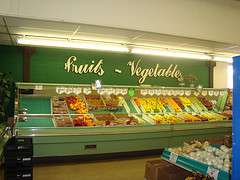 On Tuesday, the United States senate passed the Food Safety and Modernization Act (senate bill 510). If the House also approves the bill, as expected, the Food and Drug Administration (FDA) will have the power to force food recalls when contamination is reported by consumers. The bill will also increase the stringency and frequency of safety inspections for food manufacturers and processors.
On Tuesday, the United States senate passed the Food Safety and Modernization Act (senate bill 510). If the House also approves the bill, as expected, the Food and Drug Administration (FDA) will have the power to force food recalls when contamination is reported by consumers. The bill will also increase the stringency and frequency of safety inspections for food manufacturers and processors.
Last week, the senate amended their version of the bill to make farms with revenue less than $500,000 a year exempt from the new requirements. Direct-to-consumer sellers, including farmers’ market vendors, would also be exempt. The bill does not address poultry or beef products, which are regulated by the U.S. Department of Agriculture (USDA).
A managing partner at the venture and private equity fund Bradmer Foods, Adam Borden, predicted the pending regulation will compel mass and industrial food producers to hire more people, and invest in technology to help them track their products and oversee their facilities. Costs could be passed along to consumers in food prices, Borden believes. Bradmer Foods’ portfolio includes the acai beverage company Sambazon, the sustainable packaged seafood company Blue Horizon Wild, and the organic premium confectioners Charles Chocolates.
Critics of the Food Safety And Modernization Act, the Christian Science Monitor reports, contend that the regulations will put small food businesses at a disadvantage versus large industrial food companies. Borden believes these concerns are misguided, and explained:
“Small or growing processed food manufacturers usually acquire ingredients from relatively larger companies so that they can source them in high enough quantities to meet demand. It’s mostly primary agricultural providers of a larger size that will have to upgrade their systems under this bill. Local exemptions are built-in to protect the eat local movement, food trucks and more. It’s not such a divisive proposal, and it’s something that companies should be able to adapt to reasonably well.”
Federal regulations often spur demand for compliance-related technology and services, as seen in the finance sector with Sarbanes-Oxley. If the bill passes, Borden and other industry insiders have suggested food tech players stand to win new business.
The director of science and technology projects with The Institute of Food Technologists (IFT), Jennifer McEntire, sees particular market opportunities for companies that provide product tracing, enterprise resource planning software, packaging and preservative technologies.
McEntire elaborated:
“In particular with more expensive products, say spices instead of commodities like flour or sugar, I’d expect to see companies using something like radio frequency identification (RFID) tagging to trace pallets and cases or even individual packages in an automatic way through every step from [farm to table], noting temperature changes and more along the way.
For larger volume products that don’t have the value to warrant spending on RFID-tagging, which is still relatively expensive, companies might tweak and link their enterprise resource planning systems. A number of companies [like SAP and YottaMark] are already working with food manufacturers, processors and handlers to report on the origins and whereabouts of their products. If this bill passes, they’ll be able to provide a more granular report through linked systems, because all companies along the chain will be mandated to keep more careful records. We’ll probably even see food companies make the information available to consumers through apps and websites.
Finally, companies will want to avoid the appearance of contamination if their food is damaged from temperature abuse, or other issues, even just sitting on the shelf too long. There are a number of innovations that are promising and becoming more affordable, here around packaging and preservation.”
Among available packaging and preservation technologies on the market are: non-thermal, UV light and high pressure proceses that kill microorganisms in food without damaging the nutrient composition and integrity of a product; and biosensors that can be added as components to a package that will warn consumers or grocers if any kind of contamination, spoiling or tampering has occurred before they sell or eat the product.